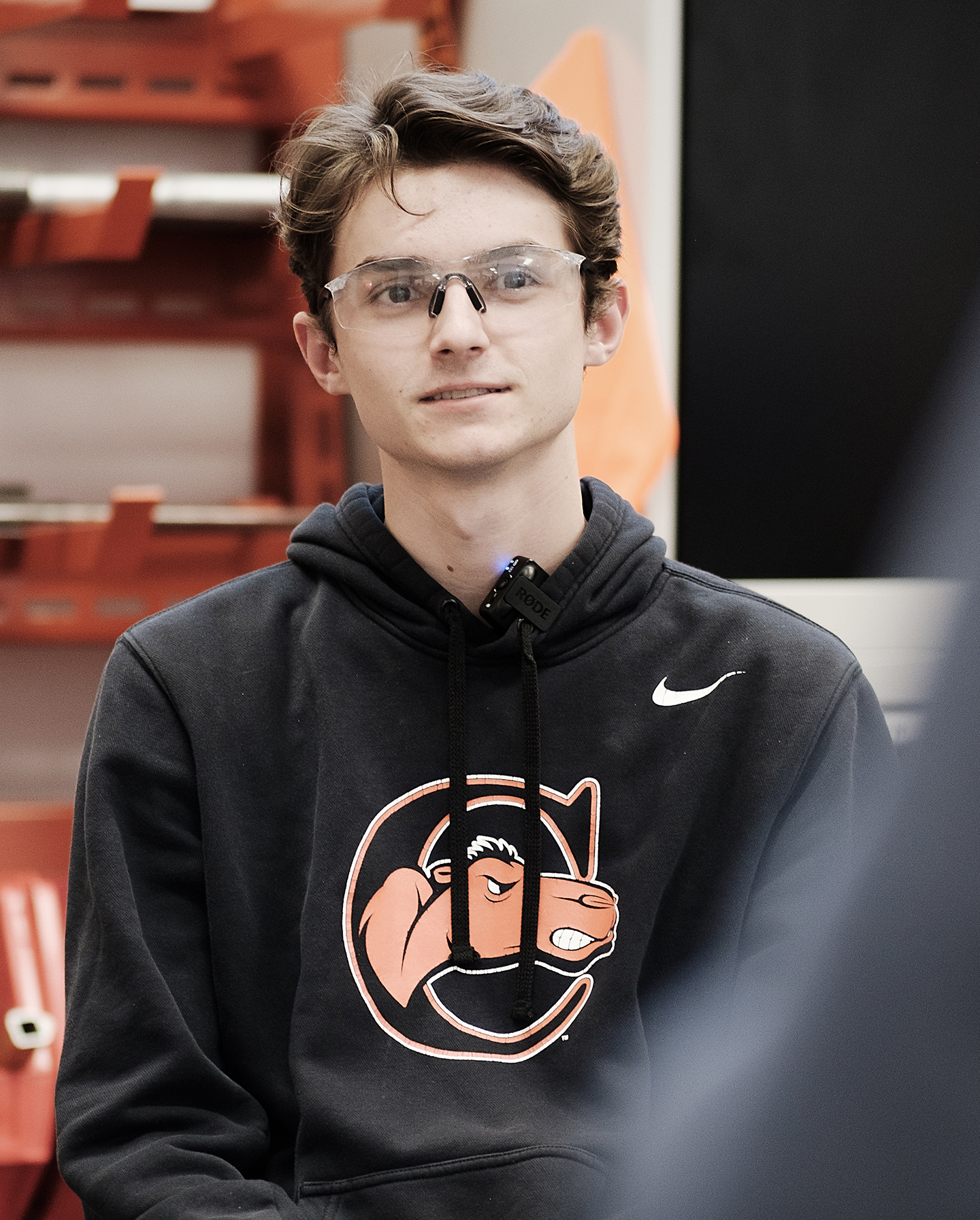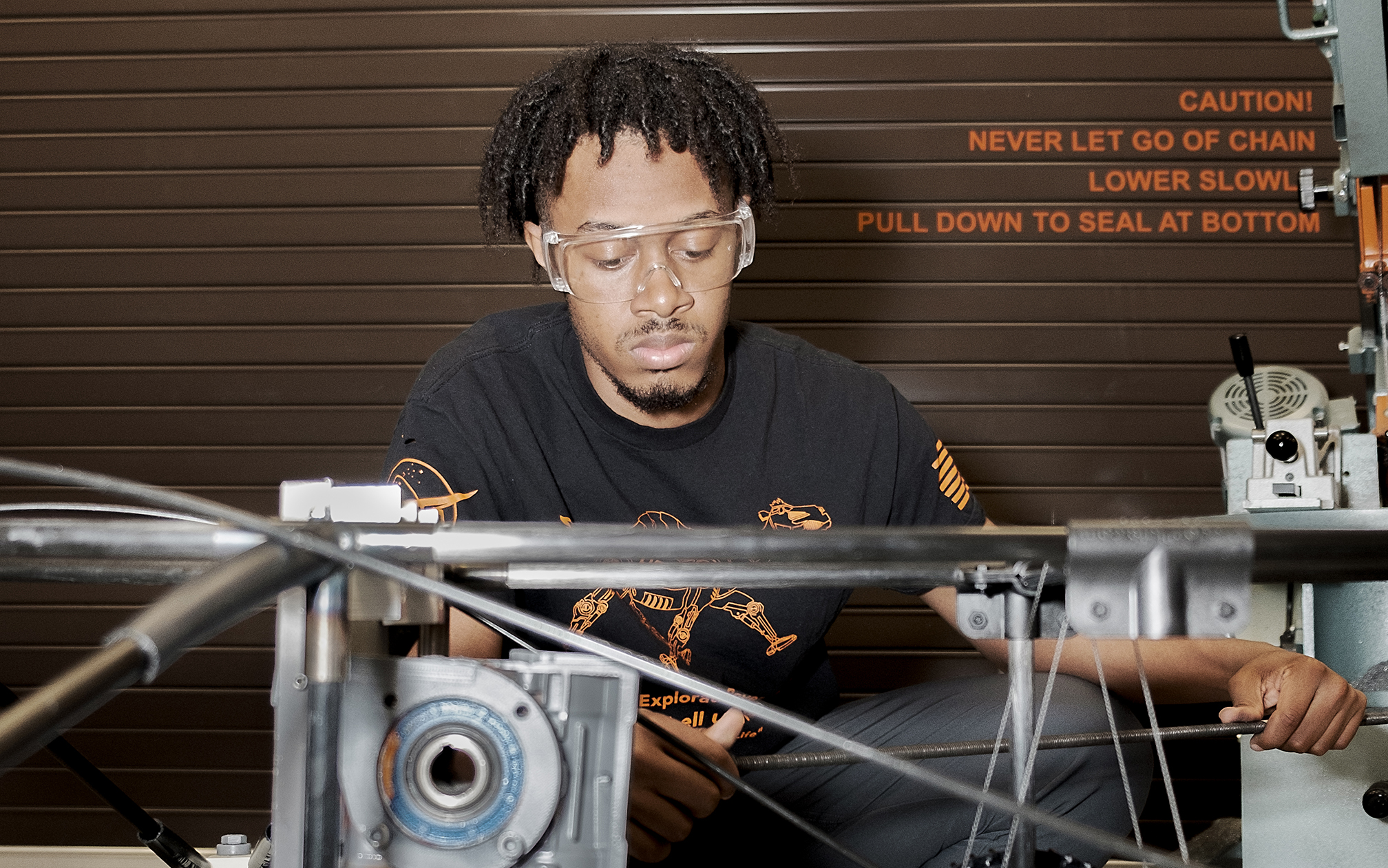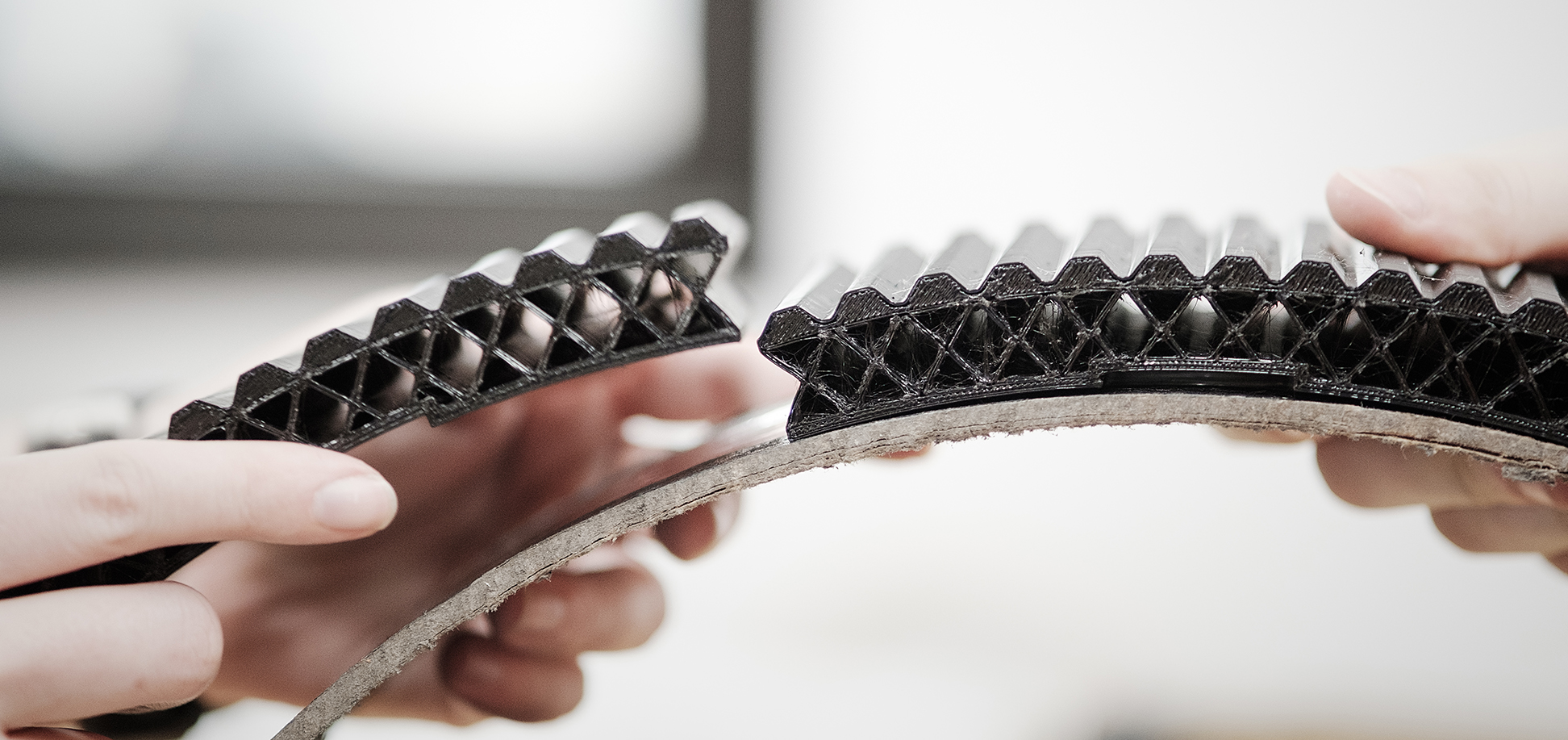NASA’s annual challenge to build the nation’s best Mars-capable rover equips Campbell engineering students with team-building skills, leadership know-how and important hands-on experience. It also serves as a Super Bowl-like event for a young program hungry to prove itself to the larger schools.
A four-time Top 25 finisher and a runner-up state champion in high school golf in her hometown of New Bern, Julie Fiedler thought her biggest competitive event at Campbell University would take place on a field of fresh, well-manicured green grass and not on a NASA-built obstacle course.
But Fiedler has happily traded in her orange skirt and visor for blue jeans and safety goggles in now her second year as a member of the School of Engineering’s Human Exploration Rover Challenge team, set to compete this month at NASA’s annual HERC competition that draws nearly 100 of the nation’s top collegiate and high school engineering programs annually.
Fiedler, a New Bern native and current sophomore at Campbell, compares the event — which she experienced for the first time as a freshman in a virtual setting (this year’s challenge returns to NASA’s campus in Huntsville, Alabama) — to another much different, much bigger sporting event.
“I mean, it’s our Super Bowl,” she says, matter of factly. “It was big last year, and we didn’t even have that environment where we can cheer each other on and see the other teams. Going to Alabama this year, there’s a completely different set of emotions that will go into this. We’re really excited about it.”
As a freshman, Fiedler was “just” a team member, although she’ll point out that first-year students in bigger programs don’t even get that kind of opportunity (more on that later). This year, she’s taking on a more of a leadership role — design leader, in charge of the blueprints for a machine built “to push the limits of innovation and imagine what it will take to explore the moon, Mars and other worlds.”
For the past two years, Campbell HERC teams have performed well on the national, albeit virtual, stage. NASA’s event was canceled in 2020 barely a month into the COVID-19 pandemic, and it returned in 2021 with an online competition where teams presented blueprints, photos and video of their rover and explained their process to the judges. That year, Campbell earned the Project Review and Ingenuity awards. Last year, Campbell earned the Task Challenge award and its first appearance — a third-place finish — in the coveted “Overall” category.
The teams have been directed by Dr. Lee Rynearson, associate professor of engineering and recipient of this year’s D.P. Russ Jr. and Walter S. Jones Sr. Alumni Award for Teaching Excellence, one of two top honors for Campbell faculty. Rynearson’s teams usually total about 30 engineering students who spend hundreds of hours outside of the classroom to design, build and test their rovers in the months leading up to the spring competition.
Because it’s been four years now since the last road trip to NASA’s sprawling Marshall Space Center in Huntsville, Alabama, none of the members of this year’s team have experienced the challenge in person. Being there, he says, amplifies the excitement ten fold, provides more obstacles and makes the competition feel more like a sporting event.
“A virtual competition allows you as many do-overs as you want,” Rynearson says. “You can do run after run for practice and submit the video of the best run. In the live competition, you get two eight-minute chances to tackle the challenge course, and that’s it. If something goes wrong — either mechanically or due to driver error — the season can come to an abrupt halt with a broken rover or disqualification.
“It’s a huge difference in tension and atmosphere — all the teams are together in the pits, the scoreboard is getting updates as teams finish runs, and NASA is live-streaming with announcers and commentary. There’s shouting and cheering. It will be a big difference.”
The big day is barely three weeks out, and Fiedler, lead engineer Jaylen Wilkes and mission director Harrison Smith are joined by several other teammates inside Engineering Annex II, a metal building filled with enough tools and machinery to keep any mechanical engineer busy for years. For the HERC competition, NASA looks at more than just whether the rover can maneuver the terrain — teams are graded on design, excursion readiness, their Mission Readiness Review and their overall STEM engagement.
As mission director, Smith, a junior, is the “face” of the team — the student who will have the most interaction with NASA and the judges. He says the two biggest components for success are time management and communication.
“It’s not just my time management, but managing the team and keeping everybody on track to do what we need to do,” he says. “That’s why you need good communication and leadership skills, too. You need to know how to separate having a friendship with members of the team and act more like they are my peers, and we’re working together to meet the same goal.”
Wilkes called the 2022 competition a “time crunch” and said he wants to avoid the last minute scrambling that can lead to an inferior machine.
“It’s tough this year, because we’re doing a whole lot of new things to this vehicle to make it better,” he says. “Our wheels are completely new, with the S-shaped crate suspension inside the wheel now, and the carbon fiber and other materials are making it a lighter-weight machine.”
For Wilkes, the entire experience is fun, but the real satisfaction comes at the end.
“Just seeing your concepts come to life,” he says. “To hear others compliment your rover. It’s always great to finish your project and be happy about it.”
Because of the last two years, expectations are high heading into this year’s live event. “Success” this time around will mean a return to the winner’s circle, Smith says. He’d also like to see Campbell crack the “featherweight” category because of all the lightweight additions. He calls the new materials “a renaissance in technology,” and he’s excited to see it in action.
“We just want to show a decent scoring overall,” he says. “We want to do well and show people what Campbell’s got.”
Adds Rynearson: “We have great potential, but there’s no telling what will happen during competition runs on NASA’s challenge course. Right now, we’re focused on dialing in our rover and preparing our drivers.”
 Harrison Smith
Harrison Smith
Junior from Rockingham | HERC mission director
Toys come and go in a child’s life. Some break, others are tossed and forgotten after some use and some leave a lasting impact. Legos and Lincoln Logs fell in the latter category for Harrison Smith, the son of two Campbell University graduates who thought about those toys when it came time to choose a major and a potential career path after high school.
Now in this third year in the engineering program, Smith has a plethora of experience in the lab. He was part of the HERC “pod team” for as a freshman and worked on the rover’s steering system as a sophomore. This year, he’s the man in charge — mission director.
“I learned a lot from the previous mission directors, and I feel like every year we’re implementing something that carries over,” he says. “It’s been a great time being part of a process that feels like it’s building toward something great.”
 Julie Fiedler
Julie Fiedler
Sophomore from New Bern | HERC lead designer
Julie Fiedler attended her first engineering camp in the seventh grade, and from there, she was hooked. She came to Campbell in 2021 to join the University’s stellar women’s golf program, but having access to an engineering program certainly sweetened the deal while choosing a college.
“The first thing that drew me in was the idea of small classes sizes. The other school people around here look at for engineering is NC State, and when I heard there would be hundreds in each class, that turned me away. I like the one-on-one experience with a professor. I like the hands-on part of the curriculum here. The ability to take on what’s considered a senior-level project at other schools in my freshman year here is just unheard of. It made me want to come here even more.”
 Jaylen Wilkes
Jaylen Wilkes
Junior from Knightdale | HERC lead engineer
Engineers seemed to live cool lives. At least that’s what Jalen Wilkes thought as a young boy — you get to create everything from buildings and cars to the video games he used to play. Then the Marvel movies entered his life, and he watched in awe as Peter Parker engineered his own Spiderman suits, and Tony Stark created Iron Man. It was all make-believe, Wilkes knew, but, you know … some of it could be real, he thought.
Wilkes chose Campbell’s budding engineering program because it was close to home, and he liked the idea of getting in the lab and rolling up his sleeves from Day 1. Before college, he thought he wanted to design cars one day. Now, he loves coding, wiring and circuitry and even the idea of aerospace design. In other words, he’s loving it all so far. “Campbell showed me from the jump all the first-year projects they get to do. That was something I didn’t see from other schools.”
Hands-On Experience
Ask any student in Campbell’s undergraduate engineering program what drew them in, and without a doubt — every single time — the words “hands” and “on” will be heard somewhere in their answer. That’s no mistake.
It’s what stands out about Campbell Engineering when comparing it to larger, more-established programs that often require students to get their “basics” out of the way before they ever step into a lab. Campbell’s program became the 45th in the nation accepted as a Kern Entrepreneurial Engineering Network partner in 2019, in large part because of its hands-on approach.
“I have stayed plenty of nights just working in the lab on the physical things that we do here,” says junior Harrison Smith. “Planning i out is one thing, but when you’re actually on the machines, building the products you’ve worked so hard to design, it’s so much more meaningful.”





